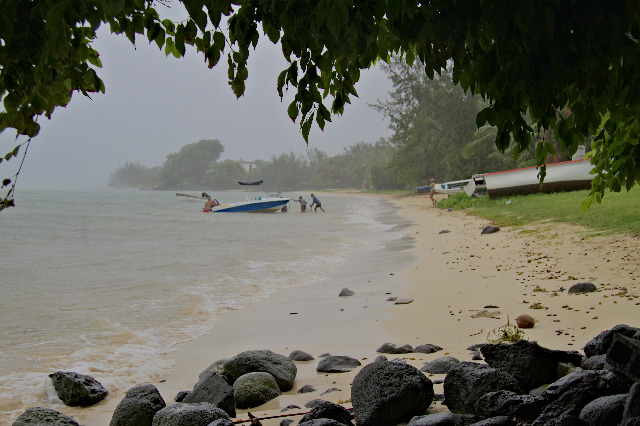Thailand is certainly not a windy country - even moderate winds mostly only occur in the mountains. Coastal regions are made a little cooler by gentle breezes, while the central plains, where rice is grown, normally only experience the gentlest of gusts. But Thailand does have a monsoon season, and that brings months of constant wind. Moreover, the trend is towards higher winds. "In general wind speed is picking up here," says Aaron Daniels, vice president of business development at Bangkok-based Wind Energy Holding Co., Ltd. which was founded in 2009. The faster speeds are caused by climate change. Thailand needs to make use of this potential. The country certainly has a growing appetite for energy: its electricity demand rose by 8.5 percent last year and, according to government forecasts, will almost double by 2050. As a result, the southeast Asian country is looking to develop all types of energy sources, but will focus on renewables. The aim is that green energy will produce a quarter of the country's electricity by 2030. Thailand is already a renewables pioneer in the region.
Hydropower is currently the leading renewable energy source in Thailand, with biomass in second place. However, wind energy is now also helping to make Thailand a green-energy trailblazer. The country's first large wind farm, FKW, which is operated by Wind Energy Holding, opened last November. The farm is located in Nakhon Ratchasima Province in northeast Thailand. The neighbouring KR2 Wind Farm went online this February. With a total rated power of 207 megawatts (MW), FKW and KR2, which comprise 90 Siemens turbines, are by far the largest wind farms in southeast Asia. When the Bangkok government published its development plan for alternative energies in March 2012, the country only had 7.28 MW of wind power in total. This had jumped to around 250 MW by the end of the year. According to the development plan, wind energy should produce 1,200 MW by 2021. This will put it in a fairly similar league to solar power, which is to provide 1,806.4 MW by 2021.
Wind Energy Holding currently owns the lion's share of the new wind market in Thailand."We have four projects totalling one gigawatt at the planning stage," Daniels says. "Our experience in Nakhon Ratchasima has been good so far." The company sells the electricity generated in the wind farms to the state energy supplier EGAT, which feeds it into the national grid. A feed-in tariff of 8.8 eurocents per kilowatt-hour has initially been granted for ten years. However, the company is optimistic that the tariff will be paid for a longer period.
"The tariff the government has established shows its commitment to wind energy," says Daniels, who sees excellent potential for expansion in the sector. According to the World Bank's "Wind Energy Resource Atlas of Southeast Asia", which calculated wind energy potential in Thailand, Laos, Cambodia and Vietnam, Thailand has 761 square kilometres of land with good to excellent wind conditions for large turbines. And the potential is far larger for small turbines, which require less wind. Small turbines are ideal for local energy consumption and make particular sense in remote regions or islands that are not yet connected to the grid. Various types of small turbines are already replacing the standard diesel generators. Five years ago, the Thai energy ministry funded a pilot project which saw the installation of micro wind turbines with a rated power of one kilowatt each in 60 villages across the country. The electricity produced is stored in a battery and mainly used to provide lighting. Eighty turbines of 500 watts each will be installed on remote islands in southern Thailand as part of a new project.
However, Thailand is not the only country in the booming region that wants to make greater use of wind power. Before FKW Wind Farm started operating, the region's largest wind farm was in Bangui Bay at the northern tip of Luzon, the largest island in the Philippines. The World Bank identified the greatest potential in Vietnam, where a 3,444-kilometre long coast, many mountainous regions, and a monsoon season create particularly good wind conditions. According to the report, this newly industrialised country, whose energy demand is growing annually at double-digit percentages, could produce 513,360 MW through wind power. Development is still at a very early stage: the government is planning to have 1,000 MW of wind energy by 2020 and 6,200 MW by 2030.
Even Myanmar, whose economy is more or less starting from scratch following years of isolation but with forecasts for rapid growth, has got on the band-w^on as regards wind. The Thai company Gunkul Engineering Public Co., Ltd. is building three wind farms with a total rated power of one gigawatt. It is also planning to sign a contract with Myanmar's government this year for two further projects. Other developing countries such as Laos and Cambodia are likely to follow suit at some stage.
The wind energy market is more or less saturated in western industrialised countries, but Asia is still a large growth market. China is the worldwide leader in terms of wind-energy expansion rates and the power it has already installed (new energy 2/2013). The fresh wind currently blowing through Thailand's energy sector could mark the start of a boom in southeast Asia.








